5 indigenous words about the environment that don’t exist in English
IFAD Asset Request Portlet
Asset Publisher
5 indigenous words about the environment that don’t exist in English
Estimated reading time: 3 minutes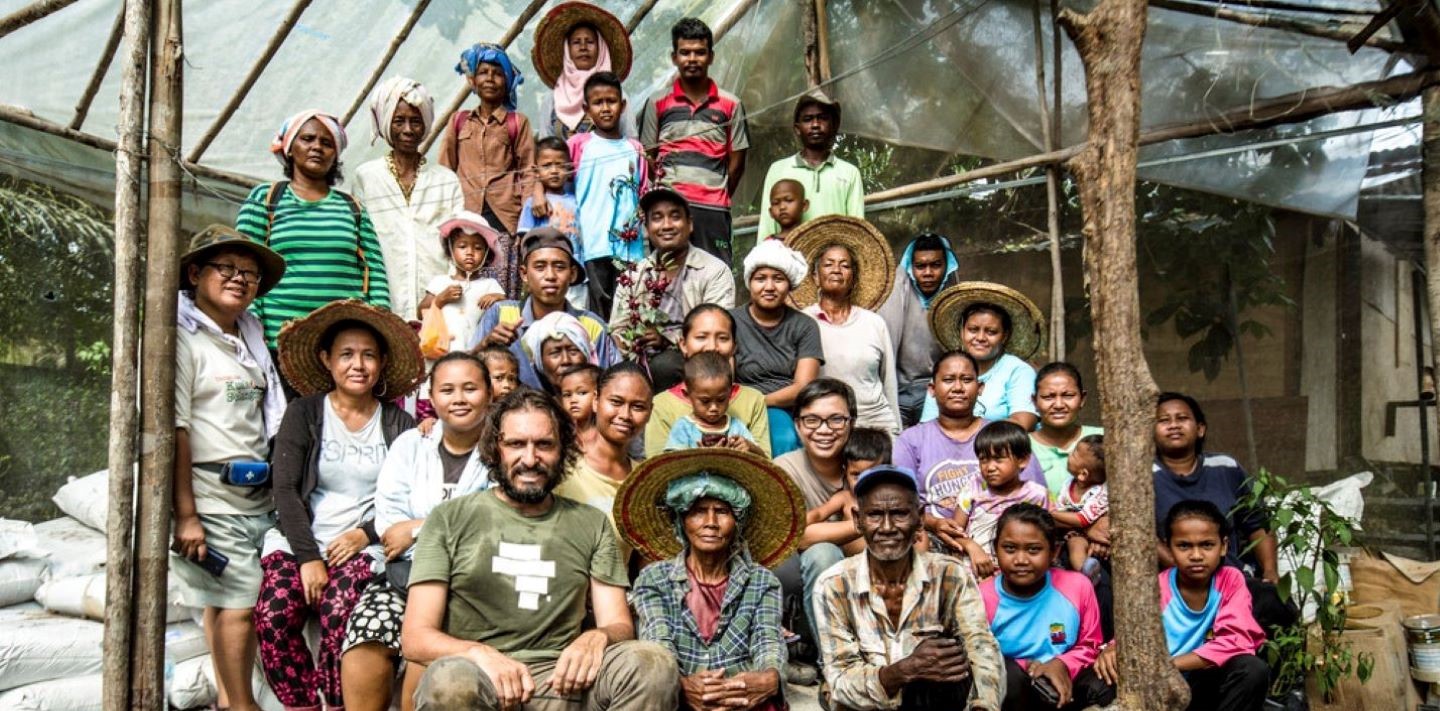
From forest fires, to floods, to heatwaves, the impacts of climate change are being laid bare every day. As we scramble to find ways to mitigate these impacts, we have a lot to learn from indigenous peoples.
Their in-depth local knowledge forms the basis of food systems that are unique to the ecosystems they inhabit. Over generations, these communities have protected the natural resources and biodiversity of their homes. For them, sustainability is second nature.
Not only that, indigenous peoples use language in a powerful way to describe that which we all rely on: Mother Nature.
Here are five unique words and concepts indigenous peoples use to describe how they interact with the natural environment.
1. Inayan – “Unethical deeds”
Community: Kankanaey people
Location: Cordillera, Philippines
Inayan is a community value that prohibits any act that causes harm to anyone or anything, living or non-living. For example, it is inayan to dump in rivers.
It is based on the belief that everything is interconnected and is closely linked with biodiversity and conservation. With inayan, communal forests are protected, and natural resources are used sustainably.
The Kankanaey people live in the Cordillera mountain range in the Philippines. They are divided into two groups – the Northern and Southern Kankanaey. Both groups practice swidden and wet rice agriculture, fish, hunt and forage. The northern group’s second main produce is camote (sweet potato).
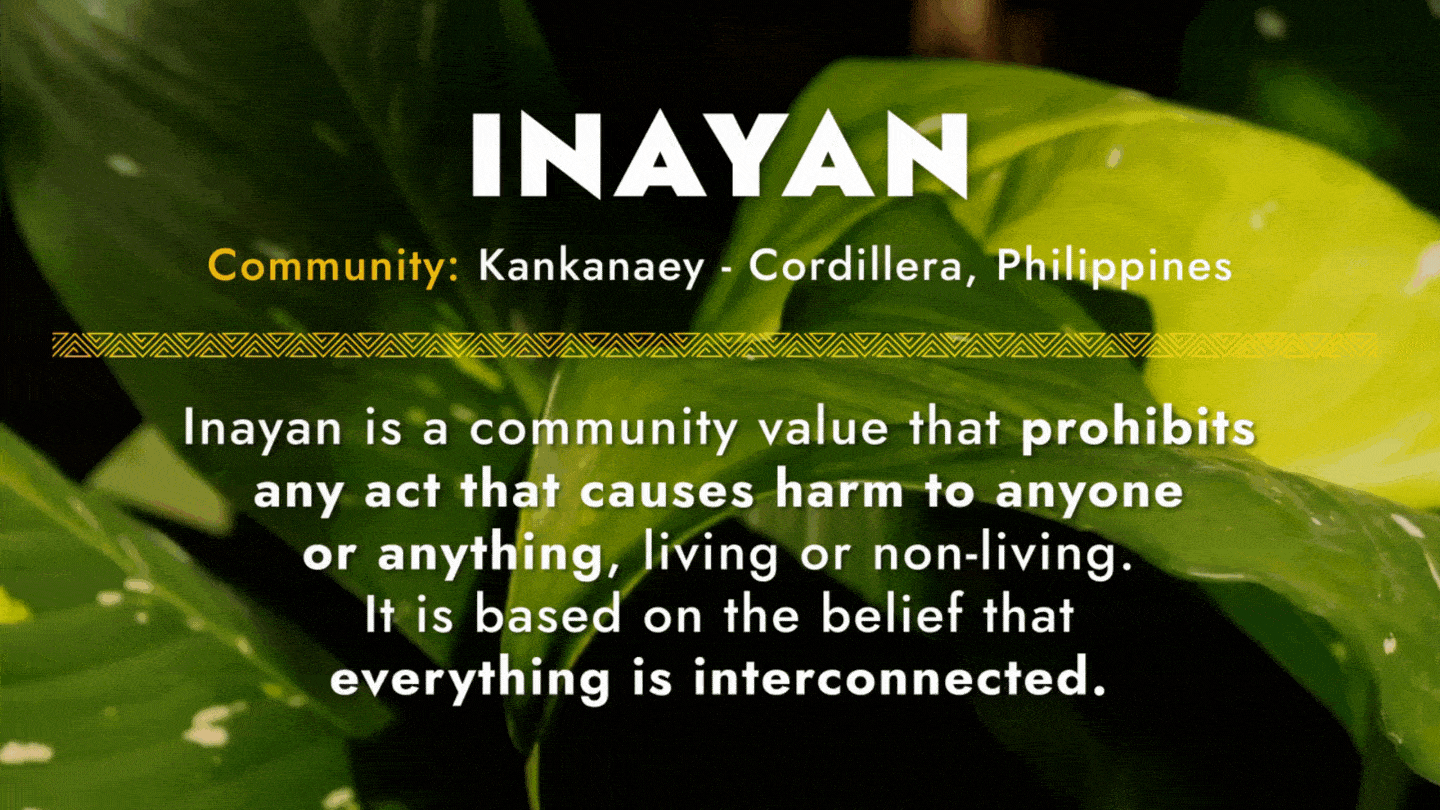
2. Yok’ol-kab – “The world”
Community: Yucatec Maya
Location: Belize
Yok'ol-kab can be loosely translated as “the world”, but its literal translation is ‘over honey’, recognizing the earth as the source of nourishment and wellbeing.
The Yucatec Maya historically occupied a large part of the Yucatán peninsula in Mexico. Today, they are present in southern Mexico and northern and western Belize. Many communities in Belize cultivate corn, while also engaging in many avenues of economic life. The Yucatec language in Belize is struggling to survive.

3. Ral Ch’och’ – “Children of the earth”
Community: Q'eqchi Maya
Location: Belize
Ral Ch'och' refers to people who depend on, work, and care for the earth. This is how the Q'eqchi people refer to themselves.
The Q'eqchi Maya people today live in both Guatemala and Southern Belize. Historically, they cultivated a wide range of edible plants and supplemented this with foraged foods. Today, many continue to practice subsistence farming, cultivating corn, beans and cacao, as well as harvesting foods from the forests.
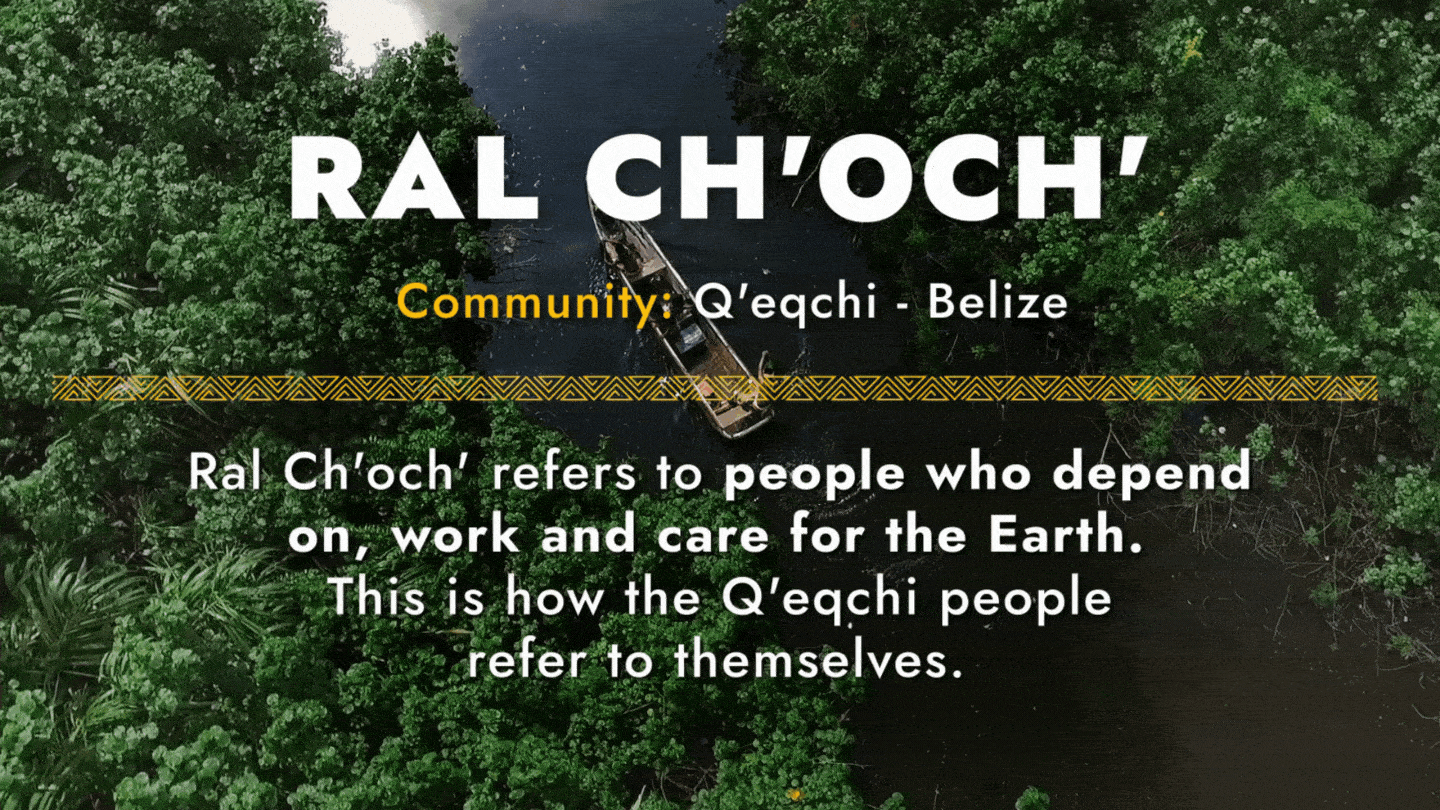
4. Linka – “Feeding livestock with dew”
Community: Masaai
Location: Tanzania
Linka is the practice of grazing cattle before sunrise when the grass is covered in dew. The Maasai believe that doing so makes the cattle healthier so they will produce more milk. Linka is used during the wet season, when it’s easier to find lush pastures close to the homestead.
Traditional Maasai lifestyles and food systems centre around cattle. Today, many are excluded from their ancestral rangelands by game reserves, national parks and encroaching settlements. Some now also cultivate maize and other crops.
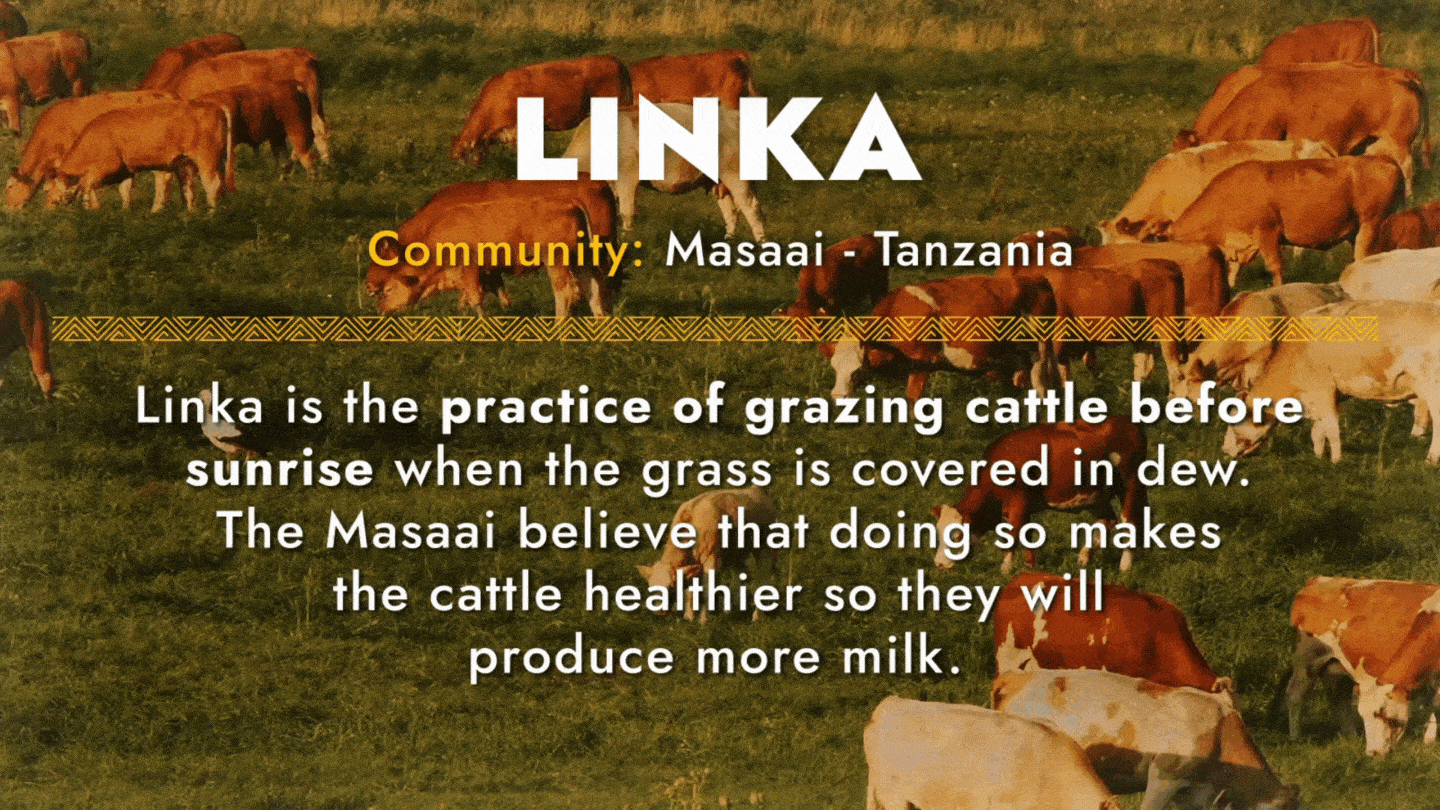
5. Aroni – “To skip watering the herd for a day”
Community: Masaai
Location: Kenya
Aroni is when a farmer skips giving their herd water for a day or two so other herds can access a scarce water supply.
During the wet season, there is more than enough water for people and animals alike in Kenya. But, during the dry season, water becomes scarce.
The Maasai see land as something to be shared by all, and to be managed carefully and sustainably. By not watering cattle daily when water is scarce, Maasai pastoralists make sure that everyone’s herd stays healthy.
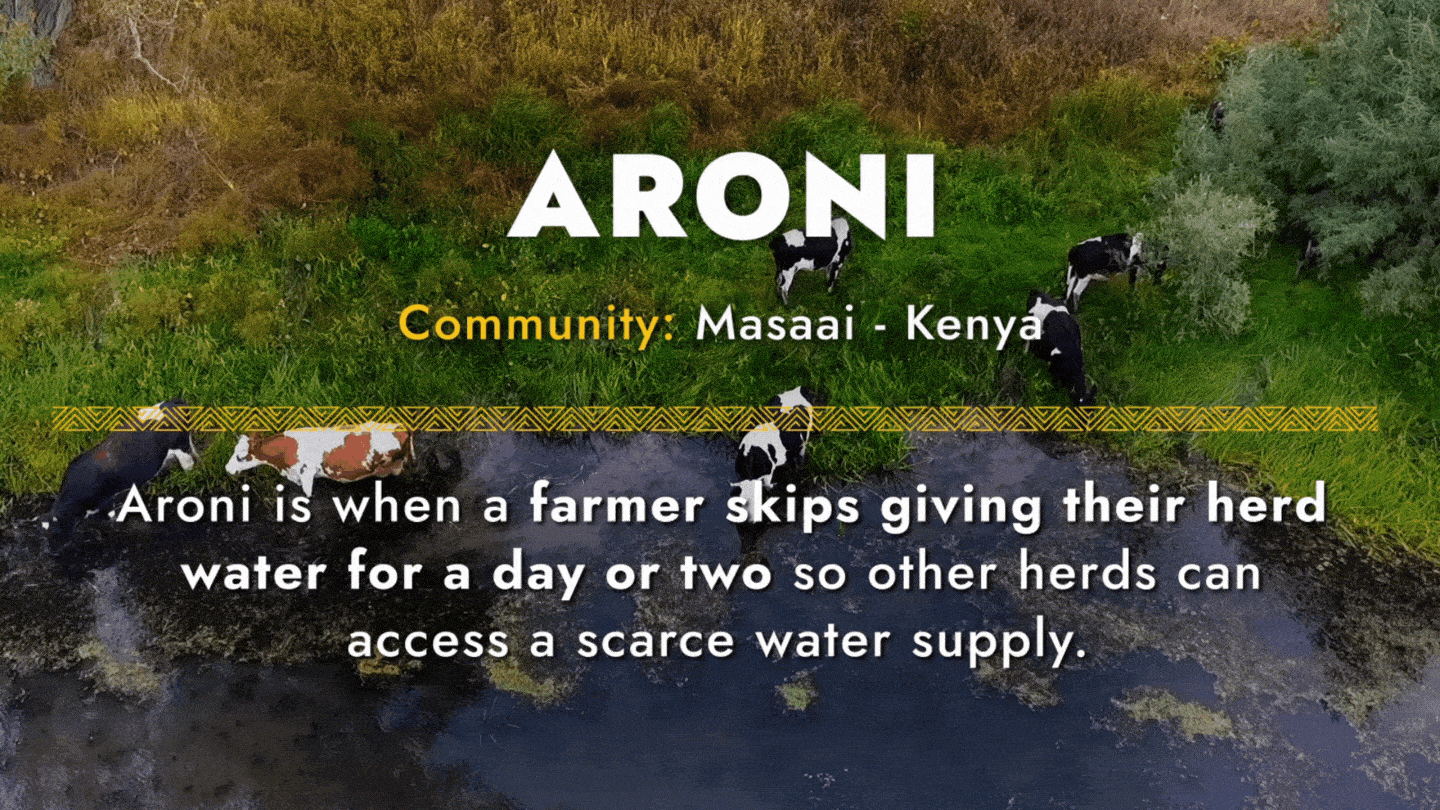
Indigenous peoples’ practices and perspectives show the way to a more sustainable future, in which we use the earth’s resources carefully and respect the web of life that nourishes us all.
That’s why IFAD supports indigenous peoples in building their identity, amplifying their voices and making sure their knowledge is reflected in our work.
Explore all our work with indigenous peoples.
Discover IFAD’s Indigenous Peoples Assistance Facility.
Read how IFAD uses the principle of free, informed prior consent in its projects and why this matters.
Find out how indigenous peoples use IFAD’s dedicated funding to devise ways of adapting to climate change.
IFAD hosts the Indigenous People’s Forum every other year to create a platform for systematic dialogue between indigenous peoples and United Nations agencies.
Publication date: 08 August 2022